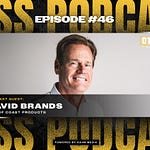In this episode of the “Only the Strong Survive” podcast, host Dan Kahn talks to Hemmings Senior Vice President of Media Matt Boice. An industry veteran, Boice has had an interesting trajectory over his decades-long career. In 2005, he worked at Source Interlink negotiating the placement of magazines, periodicals and other items in newsstand checkout displays. Eventually, the company began to diversify by buying magazine distribution channels. It then took that diversification a step further by purchasing Primedia, the owner of the many enthusiast magazines Source Interlink distributed and what was once Petersen Publishing. Boice switched from the distribution side of the business to the media side, becoming a “magazine guy” in 2009.
During the era that followed, Boice had to navigate through a rapidly changing media landscape. The internet led to the demise of magazines as a major form of media. Legacy publishers then struggled to transition from print to online. The rise of video platforms like YouTube threw another giant wrench into the confusing media mix. Before stabilizing, the only constant during the time was change.
Now, Boice helps lead Hemmings through another tumultuous time in the media. During an in-depth discussion with Dan Kahn, Boice shares his thoughts on the modern enthusiast media landscape and how to navigate it. Here are our top five takeaways from the conversation, which include:
How quality content always matters.
Why first-party data is now critical for any media or marketing company.
How first movers can move too fast.
Why influencers are here to stay.
Where enthusiast media is headed.
Quality Content is Always King
The forms of media may have evolved over the years. Traditional enthusiast magazines once reigned supreme but gave way to websites, destroying whole publishing empires in the process. Now, those online platforms are seen as “legacy media” and are being replaced by content creators and influencers on social media and YouTube. Another wave of decentralization is now rocking the enthusiast media model.
However, there has been one constant throughout the changes: quality content is always essential. “We have a media team. We have a team of editors and a network of freelancers that do things with the written word and host some of our video series as well,” says Boice. “The media part is paramount for our success, and in the marketplace, it has a lot to do with how we tell our story.”
Data is Just as Important
One of the main reasons for the decline of print was the superiority of online advertising targeting. As potential consumers browsed the internet, third-party cookies tracked their every move. This allowed digital marketers to build highly detailed profiles about people’s interests, hobbies, products they liked, purchasing decisions and even demographics. Marketers could then use that information to deliver highly-targeted advertising aligned with that data. However, all of that is rapidly changing as data privacy laws are enacted and Google works to remove third-party cookies by the end of the year. First-party data is now more critical than ever, and brands need to do whatever they can to gather it.
“A lot of our call to action on the website is just to get people to register and sign up. In general, but also to get people to get our newsletters as well,” says Boice. “That turns into currency as Google does what it is going to do, and privacy becomes a bigger concern. Now you have the mechanisms in place where you can still have the integrity of someone’s data being private, but you can pass it through to exchanges and advertisers to where they can target that person in a finite way without knowing more than they should about the individual.”
Moving Too Fast Can Be a Mistake
In the fast-paced business world and constantly changing media environment, the temptation is to make rapid-fire decisions and move quickly. However, sometimes trends are flashes in the pan and not worth reacting to. Deciding on an outcome without all the data or time to interpret it can also be a way to make a hasty and uninformed decision. Fast movers are sometimes rewarded, but patience can also be a virtue in turbulent times.
“I think there is so much transition happening in media, the companies and the industry that you really can move too fast,” says Boice. “I’ve learned to try to be more patient. You are running so fast trying to keep up with an algorithm change or whatever else. Just try to take an inventory and listen to people and not make a decision until you have to.”
The Rise of Influencers
Traditional media companies were slow to understand the role that influencers can play in marketing. Some even actively fought against them, portraying influencers as being less than influential. All of it was an effort to make their advertising options seem more attractive and gain a larger share of any advertising budget. However, those days are over, and professional marketers need to be honest with clients about the positive impacts the right influencers can have.
“In the beginning, when the influencer phrase first came out, if you were sitting in a media company, like a larger media company, you would probably fight that notion with a potential advertiser. Now, if you try to fight it (influencers), you are going to lose their trust,” says Boice. “It is prevalent enough now, and enough media company employees are talking about it too. If you lose their trust, a company is not going to listen to what you say about what they should be doing with their products.”
Where Is Enthusiast Media Headed
With the constant changes to the media landscape, it can be hard to see where it is all going. Will enthusiast media go away completely? Will influencers replace everything, and we will be stuck watching endless TikTok videos for the rest of our lives? What is the next evolution of enthusiast media? Thankfully, Boice has some insight based on his decades of experience in the space.
“We learned a lot where we really do try to put content out there that people want to see but doesn’t necessarily sell a car on the marketplace or an intake manifold or whatever,” says Boice. “It’s hard to balance all of that. It goes back to the old world where there was church and state between advertising and editorial, but there was always a bit of crossover, and you tried to make it fit for everyone. I think that is the case today, but you have to lead with the consumer. The storytelling has to resonate with the audience, and you have to figure out how that, in our case, aligns with selling a car or, for an advertiser, it might be selling a product.”












